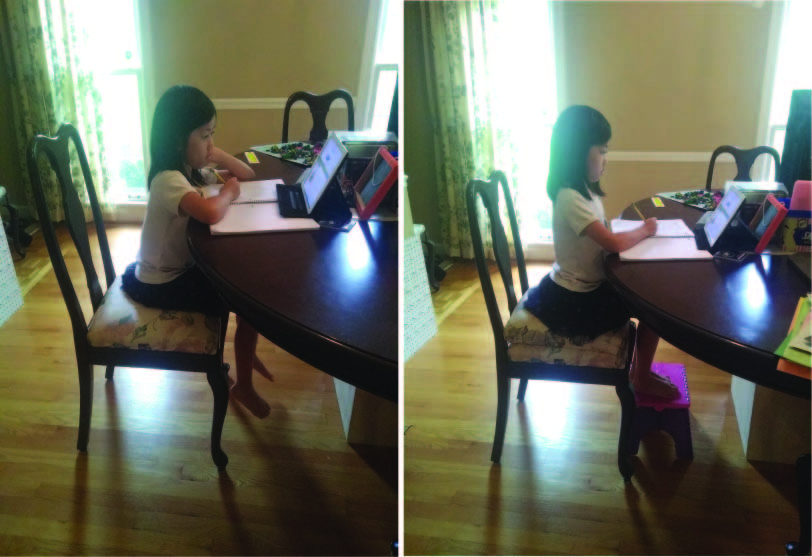Visual hygiene is now more relevant than ever as some of our patients are starting up in ‘virtual’ school. This topic has also been a hot topic among many of my patients spending hours on the computer working from home during this pandemic.
Computer Vision Syndrome (CVS) – The American Optometric Association defines CVS as a group of eye and vision related problems that result from prolonged computer use. The most common symptoms include:
- eyestrain
- dry eye
- eye irritation
- headaches
- blurred vision
- double vision.
Here are some helpful tips:
Good Posture
Sitting upright (not slouched) to support eye alignment is ideal. Reading material adjusted 20 degrees upward from the work station (you may remember those old writing desks that were slanted).
For kids, I emphasize the need to adjust furniture to the right height especially if kids are small. You can see several adjustments to my daughter’s work station. The work surface is positioned below chest level and a stool is used to support her feet. She tends to curl or cross her legs otherwise and tilt forward.
Good lighting
Natural light is the best! Trying putting the work station near a window. Natural daylight bulbs are next. Fluorescent bulbs provide the least comfort and many of my brain injury patients are especially sensitive to this form of lighting. Ideally the light is positioned to minimize glare from the reading surface.
For screen settings, I recommend the dimmest setting possible and installing programs like FLux (or night filter) which will gradually reduce the blue output towards the evening hours. The same programs can also run on other digital devices like cell phones.

